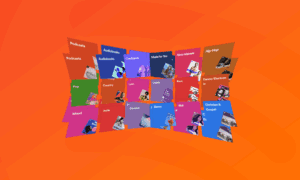
How to Get on Spotify Playlists in 2025
Getting on Spotify playlists in 2025 is still one of the most powerful ways to grow your audience and trigger the algorithm – but it’s also one of the most misunderstood parts of Spotify marketing.
Everyone talks about playlists, but few artists understand what actually gets a track placed, or what kind of playlists matter most. Submitting to the wrong curators or chasing low-quality placements can waste time and money and do nothing to help you grow.
This guide breaks down exactly how to get on the right playlists, what’s changed in 2025, and what you can do to increase your chances of being added to playlists that actually matter.
What Types of Spotify Playlists Exist in 2025?
There are three main types of playlists on Spotify:
1. Editorial Playlists
These are curated by Spotify’s in-house editors. Think ‘Fresh Finds’, ‘New Music Friday’, or ‘RapCaviar’. Getting on one of these can explode your numbers overnight, but the competition is steep. You typically need strong performance data, press coverage, or existing momentum to be considered.
2. Algorithmic Playlists
These are personalized by Spotify’s algorithm and include playlists like ‘Discover Weekly’, ‘Release Radar’, ‘Radio’, and autoplay recommendations. They are based on listener behavior, and they’re triggered when Spotify’s data shows that your track is resonating – that means low skip rates, high save rates, and consistent engagement.
3. User-Curated Playlists
These are created by individual users or brands. Some have thousands or even millions of followers. Many indie artists break through via user-curated playlists first. These lists are more accessible than editorial or algorithmic options, especially if you target curators aligned with your genre.
Step 1: Optimize Your Spotify Profile
Before pitching to any playlists, your profile should be ready to convert new listeners into fans. First impressions matter.
That means:
- A clean, professional artist photo and banner
- A short, compelling bio
- Your latest release pinned as the Artist Pick
- A custom artist playlist featuring your best songs or your influences
- All your social links connected and clickable
Your profile is your storefront. If it doesn’t look legit, curators (and listeners) will likely move on.
Think of it as your landing page designed to turn casual visitors into engaged followers.
Step 2: Submit to Spotify Editorial Playlists (Long Shot But Worth It)
You can use Spotify for Artists to pitch unreleased music at least 7 days before the release date.
When submitting, be specific. Choose accurate genres, moods, instruments and cultural contexts. Add a short pitch explaining the story behind the track, recent momentum (press, playlisting, fan engagement), and why the song matters.
Editorial placements are rare, but this process still helps Spotify’s internal systems categorize your track correctly and set you up for algorithmic success, so it’s always worth doing.
Step 3: Target High-Quality User-Curated Playlists
User-curated playlists are the most direct and accessible way to get your music in front of new listeners. But quality matters far more than quantity.
Look for playlists that:
- Are updated regularly
- Have active, engaged audiences
- Match your genre, mood, and style
IMPORTANT: Be sure to use tools like Artist.Tools or Chartmetric to make sure a playlist isn’t botted before you consider pitching. Botted playlists (where streams are generated via fake Spotify accounts) can inflate your numbers without offering any real engagement. Worse, they also often result in getting your music flagged or removed from Spotify.
Step 4: Send a Smart, Respectful Pitch
Once you’ve identified solid playlists, the pitch is where most artists blow it. Keep it brief, polite, and personal.
Your message should include:
- A streaming link (preferably a smart link or Spotify link)
- A 1–2 sentence description of the track (genre, vibe, theme)
- Why you think it fits their playlist
Don’t beg, and don’t spam. Treat playlist pitching like professional networking, because that’s exactly what it is.
Step 5: Build and Grow Your Own Playlists
You don’t need to rely entirely on other people’s playlists. Creating your own playlists is a long-term strategy that builds discovery over time.
Start a playlist based on your niche – whether that’s your genre, a mood, or a theme – and include your own tracks alongside artists your audience already loves. Share it on social media, embed it on your site and run occasional ads to grow followers.
Over time, your playlists can become a reliable source of streams and even a platform to promote your future releases.
Final Thoughts
Getting on Spotify playlists in 2025 isn’t about hacks or quick wins, it’s about landing placements that help build a long-term audience that sticks with you.
And remember – playlisting is only one piece of a winning Spotify music promotion strategy.
Want us to do this for you?
If you’d rather focus on making music while someone else handles the promotion, we can help. At Spin Promo, we provide targeted playlist pitching and Spotify Ad campaigns designed to build real fanbases, with transparent reporting and data you can trust.
We’ve helped over 3,000 independent artists land playlist placements and gain traction on Spotify. Whether you’re starting from zero or trying to scale an existing release, we’ll help you connect the dots and build the kind of momentum that actually moves the needle.
Learn more here: https://spin.promo/
Matt Moore
Matt Moore is the founder of Spin Promo, a music marketing platform that helps independent artists grow on Spotify through targeted ads and playlist campaigns. With over 20 years of experience in the music industry, Matt has led thousands of marketing campaigns for both indie artists and major labels including Warner Music Group, Atlantic Records, Universal Music Group, and Interscope. When he’s not building growth strategies, he’s probably listening to Radiohead or coding tools for fellow musicians.
